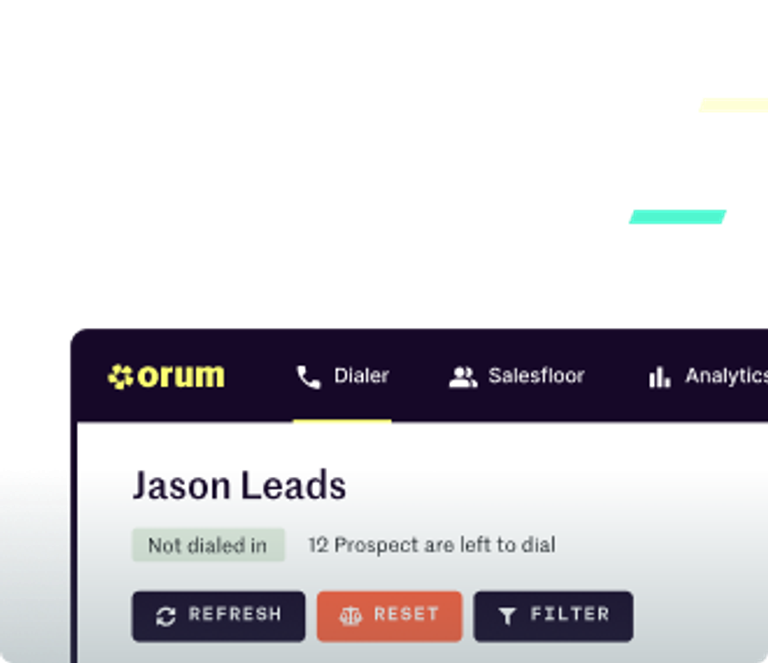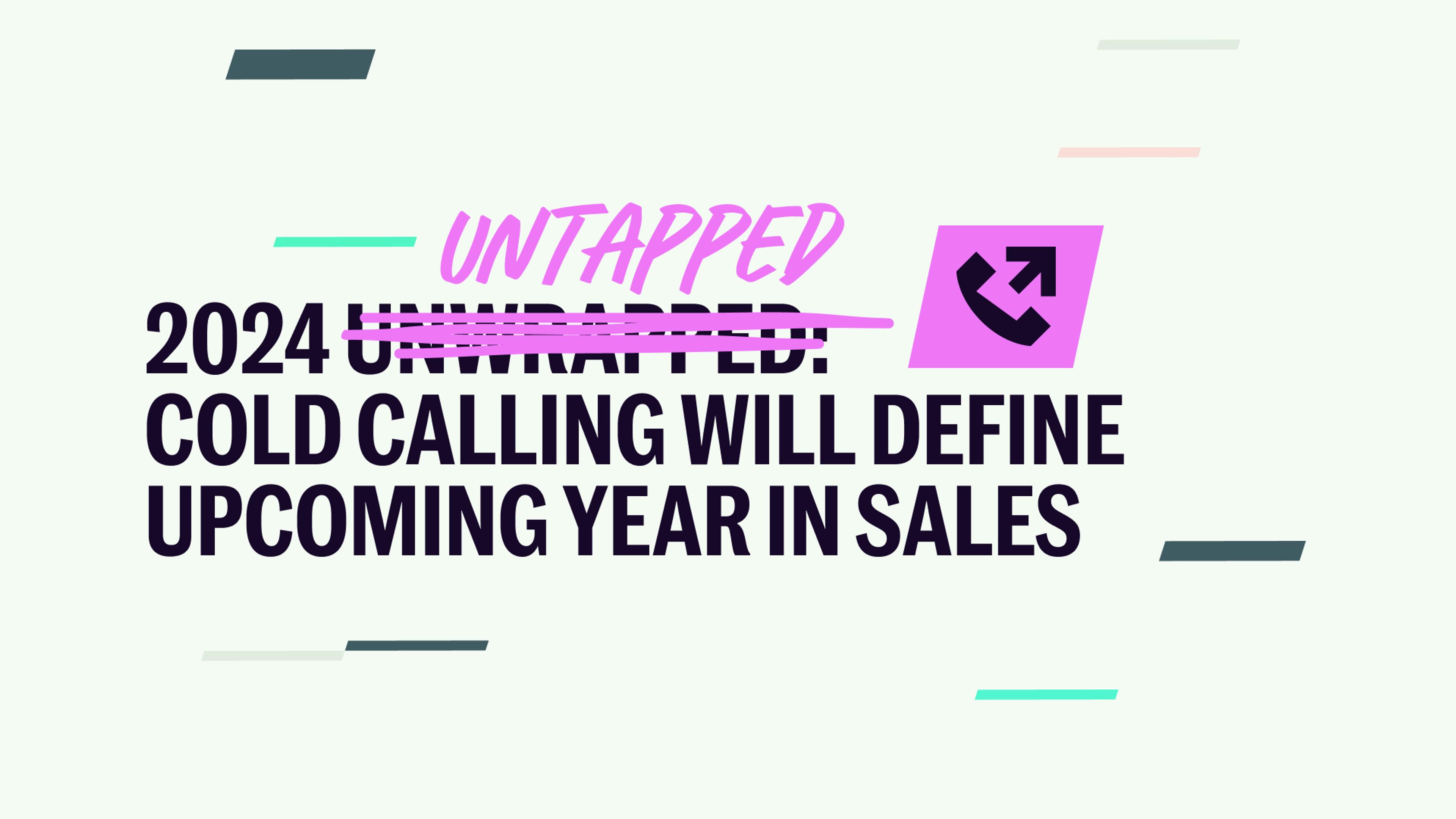How to make a successful cold call


It takes, on average, eight to nine contact points with a prospect to land a deal. Sales reps should keep that in mind during the initial cold call. It means those calls don’t necessarily need to land a meeting to have a positive outcome. The goal of a cold call is to succinctly deliver a value proposition for their organization.
So, how does one quickly pitch a prospect respectfully and on their terms? By implementing three tactics:
- Empathy
- Acknowledgement
- Permission
These tactics are necessary to begin establishing trust with a prospect. The journey from prospect to customer involves countless touch points throughout an outbound sequence but the backbone of that journey needs to be trust. Before trust can be established, however, reps need to be ready to offer the prospect a value proposition that aligns with their current needs. And that work begins before the phone is ever picked up.
What you should research before your cold call
Pre-call research is a hot topic. While some say that too much research can make a call too personal lead to call hesitancy, the benefits of pre-call research far outweighs this potential drawback. In fact, the ability to take a few minutes to conduct this research is one of the many benefits of a live conversation platform like Orum.
Not wasting time manually dialing each number and listening to ringtones allows you to build a knowledge base on the prospects instead. But what should that research be?
We’ve all been treated to the “joys” of a cold call where someone mentions your college or hometown and says something generic like, “Go (insert sports team here)!” Don’t do this. Top of the LinkedIn profile information won’t build a connection with the prospect and doesn’t prove anything beyond that you know how to Google.
Proper preparation for a call should enable reps to succinctly offer a value proposition connected to their organization’s current interests and challenges. Looking at recent LinkedIn posts by the organization and the prospect are ways to understand their current needs along with their 10-K reports and even current job openings. Depending on where their openings are, you can glean important information about their current needs.
How to make a cold call warm
Now that the research is done, it’s time to call. Sales development teams love building out call blitzes where they can make a large number of calls in a short amount of time. Call blitzes are great for churning through call tasks, but building out several smaller call lists centered around specific personas or industries can help a sales rep be more strategic.
Sigma Computing’s Director of Business Development, Sullivan Parker, shared how this serves their organization well. “Instead of loading up a single list of 100 numbers, we can do the prep work and build out five 20-person contact lists where we’re going to pitch those people similarly based on industry, size, etc. Orum lets us build out those persona lists so we can tell the same story to them all so that I know my pitch style for each list.”
Once the prospect answers the call, your time to convince them to hear a pitch is extremely brief. In the introductory phone call, avoid info dumps but have notes ready about their situation. This will help personalize objection handling and value propositions.
This is where empathy, acknowledgement, and permission come in. The first step is to immediately be empathetic of the cold call process. As uncomfortable as cold calling can be for a rep, it’s equally as uncomfortable for a prospect not expecting their call. They’ll almost certainly try to end the call quickly. At this moment, empathy and the acknowledgement of recognizing they weren’t planning to speak with a salesperson can be the bridge to a successful pitch.
As our own Aaron Melamed (a top Orum Account Executive) likes to preach, always be upfront and honest with prospects. Say that you understand you caught them cold, acknowledge that they probably don’t want to be on the phone but ask for thirty seconds to explain why your product can solve the issues you know their organization and industry are currently going through. This is where your pre-call research will come in handy.
Some prospects may still say “no thanks” but you’ll quickly learn when you’re empathic, honest, and respectful, many will be willing to give you time to offer up a value proposition. Even still, you might not land the meeting you’re seeking straight away, but that’s ok. Again, it generally takes several connection points before a prospect will accept a meeting or demo.
Not getting a meeting doesn’t mean the call didn’t have a positive outcome. If the prospect asks for more information after the pitch, recommends one of their colleagues who is the decision maker, or asks you to call them back at a later date to discuss further, these are all positive call results you should be proud of. In these examples, what happens after the call is equally important as pre-call research and the call itself.
Related read: See how to implement AI cold calling in 3 key steps, best practices, and a case study on how a B2B fintech boosted pipeline growth.
How to follow up from a cold call
After the hard work of researching and establishing a relationship of trust with a prospect, it would be a shame to mess up the endgame. And that endgame is the ever important follow-up.
An important aspect of following up is that it doesn’t need to be done instantly. If you’re in the middle of a call blitz, it’s best to stay in the flow and not disrupt the calling process. Instead, leave a note about the prospect with what to send in your follow-up and then quickly move on to your next call task.
When you’re ready to follow up, remember that trust is key to nurturing a prospect into a customer. Connecting with them on LinkedIn to share more information is always great, but be mindful about what type of content you’re going to send them. Look through your company’s customer stories and blogs to send them content that is specific to their needs. If you have upcoming or on-demand webinars that would be pertinent to their interests, send them these with an email about the specifics that they’ll find valuable.
Customizing follow up communication is just as important as customizing communication during the call itself. All of these steps may take a few extra minutes to complete but, when you combine the time saving aspects of using a platform like Orum with the increased number of deals that come from this customization, it’s worth it.
Something to always remember when going through the prospecting process is that you aren’t just looking to add someone to your pipeline for pipeline’s sake alone. You’re working to build a relationship with that prospect so that they’ll become a champion and potential lynchpin in a long lasting customer relationship. You can never be certain who will be the final piece of a puzzle that becomes a deal before you call so treat every prospect like they deserve those few extra minutes of research. It can and will make all the difference.





